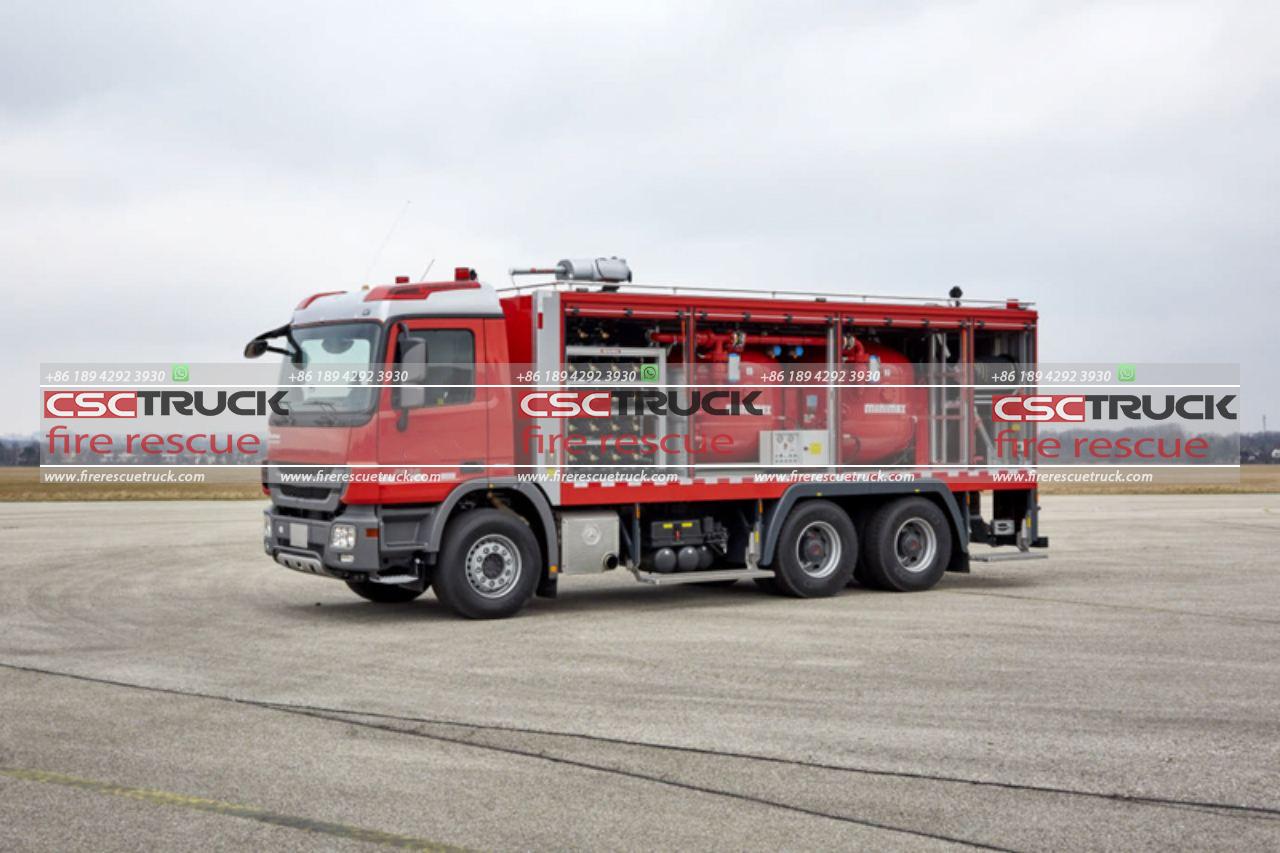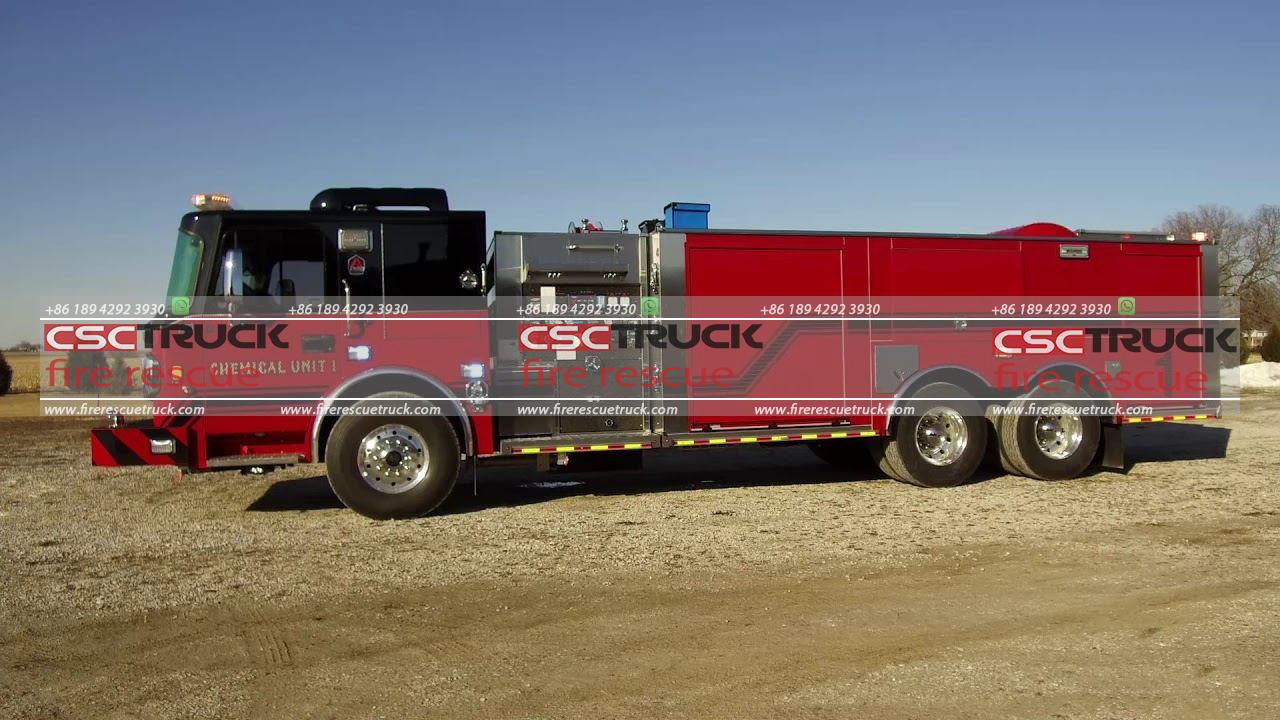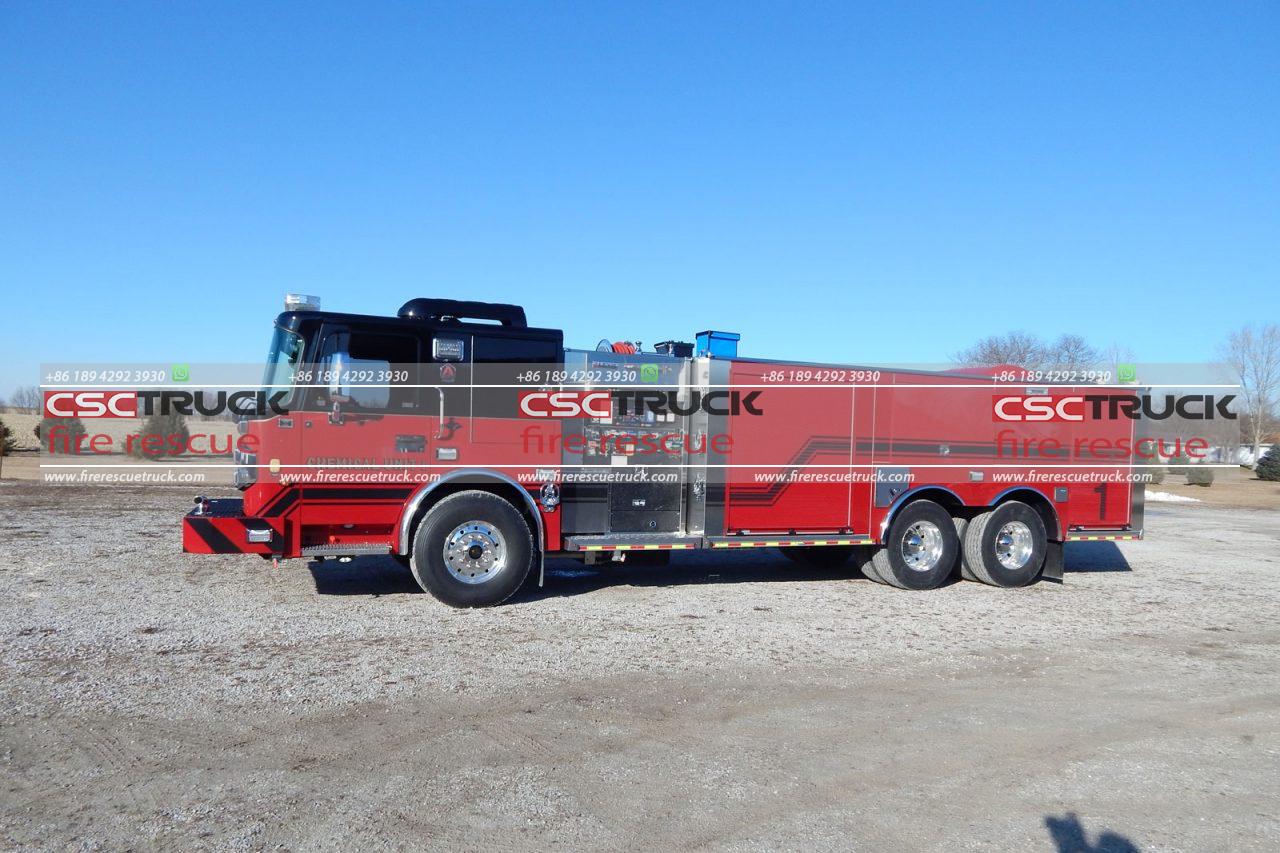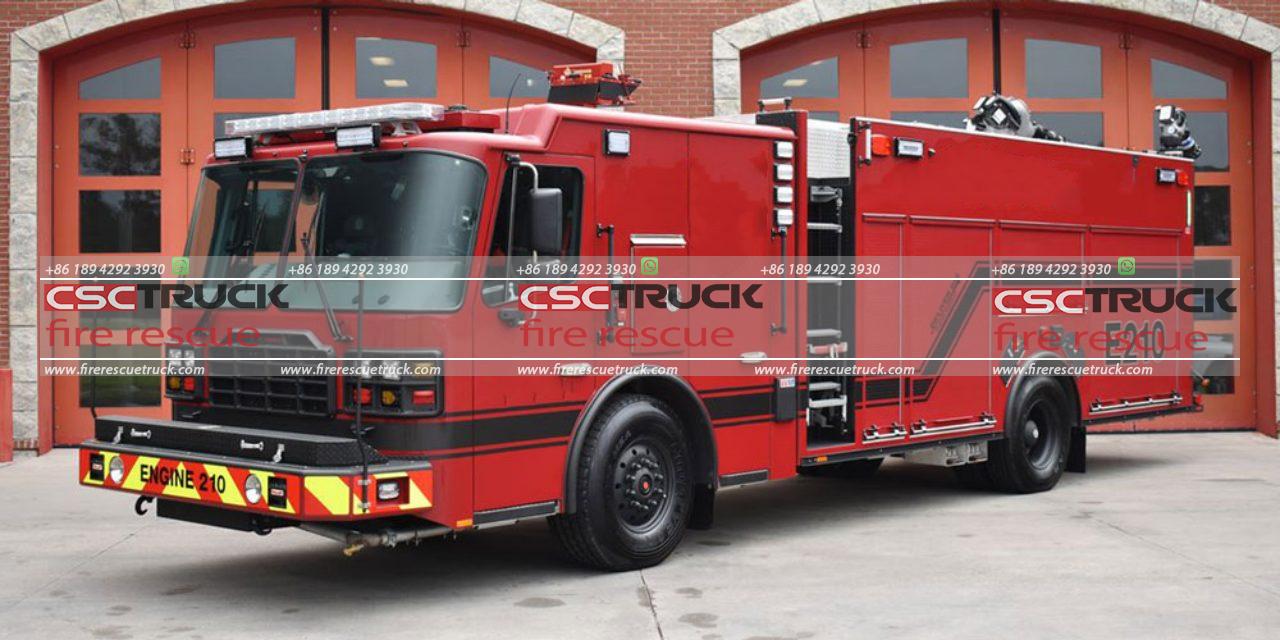Hazardous materials (hazmat) incidents are a serious threat to public safety. These incidents can involve a wide range of substances, from flammable liquids to toxic gases. When a hazmat incident occurs, firefighters need to have the proper equipment and training to safely handle the situation.
Chemical fire trucks are a specialized type of fire truck that is designed for hazmat incidents. These trucks are equipped with a variety of tools and equipment that allow firefighters to safely contain, control, and mitigate hazmat spills and releases.

The most important component of a chemical fire truck is the hazmat trailer. This trailer is typically loaded with a variety of specialized equipment, including:
- Personal protective equipment (PPE) for firefighters
- Decontamination equipment
- Spill control equipment
- Monitoring equipment
- Neutralization and containment equipment
In addition to the hazmat trailer, chemical fire trucks also typically have several other features, including:
- A powerful water pump
- A foam system
- A thermal imaging camera
- A hazmat communication system
Chemical fire trucks are an essential tool for firefighters who respond to hazmat incidents. These trucks provide firefighters with the equipment and training they need to safely and effectively handle these dangerous situations.

How Chemical Fire Trucks Work
Chemical fire trucks work by using a variety of methods to contain, control, and mitigate hazmat spills and releases. These methods include:
- Containment: Chemical fire trucks can be used to contain a hazmat spill or release by using booms, dikes, or other barriers.
- Control: Chemical fire trucks can be used to control a hazmat spill or release by using foam, water, or other extinguishing agents.
- Mitigation: Chemical fire trucks can be used to mitigate the effects of a hazmat spill or release by using neutralizers, absorbents, or other materials.
The specific methods that are used to contain, control, and mitigate a hazmat spill or release will vary depending on the type of hazardous material involved. However, chemical fire trucks provide firefighters with the tools and equipment they need to safely and effectively handle these dangerous situations.
Safety Considerations
When responding to a hazmat incident, firefighters need to take all necessary safety precautions. These precautions include:
- Wearing appropriate PPE
- Using proper procedures
- Communicating effectively
- Monitoring the environment
Firefighters should also be aware of the potential hazards associated with the specific hazardous material involved in the incident. This information can be obtained from the Material Safety Data Sheet (MSDS) for hazardous materials.
By taking all necessary safety precautions, firefighters can help to protect themselves and the public from the dangers of hazmat incidents.
Types of Chemical Fire Trucks
There are a variety of different types of chemical fire trucks, each designed for a specific purpose. Some of the most common types of chemical fire trucks include:
- Hazmat response vehicles: These trucks are designed for general hazmat response. They typically have a hazmat trailer that is loaded with a variety of specialized equipment, including PPE, decontamination equipment, spill control equipment, monitoring equipment, and neutralization and containment equipment.
- Flammable liquids vehicles: These trucks are designed for hazmat incidents involving flammable liquids. They typically have a water pump, a foam system, and a thermal imaging camera.
- Toxic gas vehicles: These trucks are designed for hazmat incidents involving toxic gases. They typically have a water pump, a foam system, and a variety of monitoring equipment.
- Radioactive materials vehicles: These trucks are designed for hazmat incidents involving radioactive materials. They typically have a water pump, a foam system, and a variety of monitoring equipment.

The Future of Chemical Fire Trucks
The future of chemical fire trucks is likely to see an increased focus on technology. As hazmat incidents become more complex, firefighters will need more sophisticated equipment and training to safely and effectively handle these dangerous situations.
Some of the new technologies that are being developed for chemical fire trucks include:
- Automated hazmat identification systems: These systems can identify hazardous materials quickly and accurately, which can help firefighters to make informed decisions about how to respond to an incident.
- Remote-controlled robots: These robots can be used to assess hazmat scenes and to perform tasks that are too dangerous for firefighters, such as sampling hazardous materials or cleaning up spills.
- Virtual reality training simulators: These simulators can provide firefighters with realistic training experiences, which can help them to develop the skills and knowledge they need to respond to hazmat incidents safely.
As these new technologies are developed, they will help to make chemical fire trucks even more effective at protecting firefighters and the public from the dangers of hazmat incidents.
Conclusion
Chemical fire trucks are an essential tool for firefighters who respond to hazmat incidents. These trucks provide firefighters with the equipment and training they need to safely and effectively handle these dangerous situations.
The future of chemical fire trucks is likely to see an increased focus on technology, as new technologies are developed to help firefighters to respond to hazmat incidents more safely and effectively.








